NOTE: As an Amazon Associate, I earn from qualifying purchases. Learn More.
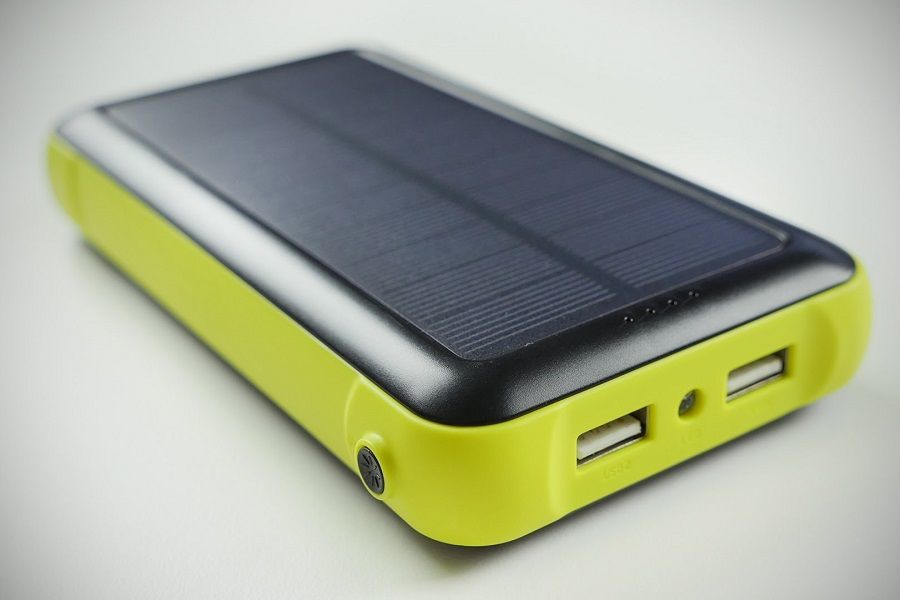
How To Choose a Solar Power Battery
Batteries are the heart of a solar generator system. Solar generator batteries are responsible for storing your solar energy and dispersing it however your application demands.
This article will help you understand the basics of how solar generator batteries work, the different battery types available and what to look for when choosing a battery for your solar generator setup.
How do Solar Power Batteries Work?
Solar power batteries work the same as any other large capacity battery.
They are charged by an electrical power supply of some kind (solar panels in this case), store electricity for an extended period of time, disperse the energy as needed, and can be recharged many times.
Many types of batteries can be used for solar generators, but only a few are used in most due to their unique advantages.
It should be noted that traditional car batteries used for starting a motor should not be used for storing solar energy. Automotive (starter) batteries are designed for quick, powerful bursts of energy; they are not designed to be constantly drained completely and recharged.
If you happen to use a car battery with a solar generator, you will only get a few uses, at best.
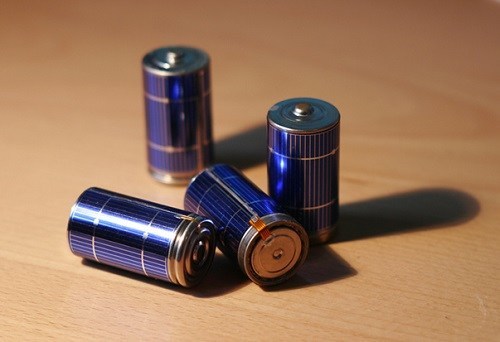
Batteries are a central component of every solar power generation system. They are used not only to store power for backup & recharging purposes, but can be used to briefly power a home during peak-price time periods, saving a homeowner money on their power bill.
Here’s how batteries work in a typical solar power generator system:
First, solar panels harness sunlight and convert it into a supply of direct current (DC) electricity, which is sent to the battery for storage.
Once the battery is charged, power can be tapped directly as DC power (12V and 24V) for powering electronics, lights and small appliances; or, it can be sent through an inverter to generate AC power (110V and 220V) for powering larger appliances.
A properly-designed solar generator battery will supply power in a steady manner for as long as its charge remains. And, it will be capable of being drained and recharged many cycles.
Most solar generator batteries can also be recharged by connecting them to any DC power source (like a car, boat or RV battery) or to an AC outlet using a power adaptor designed for that purpose.
What are ‘Amp Hours’?
This is a term you’ll hear a lot when dealing with batteries.
Amp hours (abbreviated as Ah) is the amount of useful energy stored in a battery.
One Amp-Hour of energy yields one ampere of steady current at a given voltage, for one hour.
The standard way to determine a battery’s Ah rating is to measure its total amperage delivered over 20 Hours.
For example, a 100 Ah battery will deliver 20 hours of power at an average of 5 amps per hour. (5 x 20 = 100.)
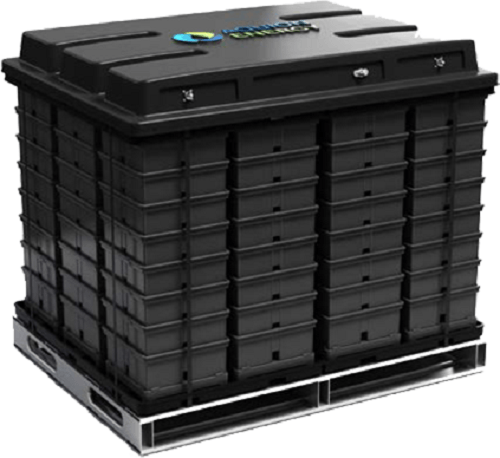
Wattage is also an important measure of any generator application.
Higher-wattage devices will deplete your battery faster. So, if you plan on using an inverter to power a high wattage appliance like an air conditioner, heater or freezer, then you need to use batteries with high Ah ratings – otherwise, your batteries will run out in an hour or two.
Types of Solar Power Batteries
Several battery types are appropriate for solar generator use. Some types are off-limits.
Lead-Acid
Lead-acid batteries are still the most commonly used solar power storage option. They have been used to power large engines and various storage requirements for many decades.
Lead-acid batteries use reversible chemical reactions to store their energy. They use lead plates or grids and an electrolyte consisting of a diluted sulphuric acid to convert electrical energy into potential chemical energy, and back again to power your appliances.
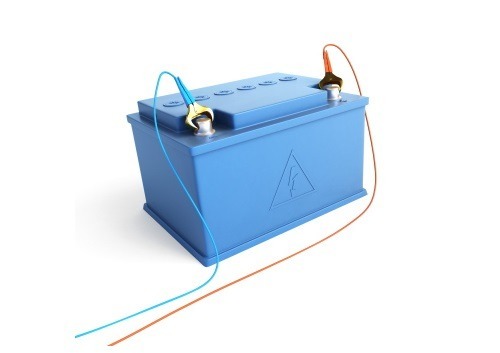
Here are the main types of lead-acid based batteries and their differences – not all are appropriate for solar generators:
RV/Marine Batteries: These batteries usually have “deep cycle” somewhere in their name, which means they are designed to be regularly, deeply discharged using most of its capacity each cycle. Think: running a fresh water pump & a TV for several days on a boat, somewhere in the Caribbean. RV/Marine batteries provide good storage capacity, and can be used for solar power storage, but there are better options.
Flooded Batteries: These batteries have a cap to add water as needed. Flooded batteries release flammable gas when used, which means they shouldn’t be used indoors. If used in a generator, there needs to be adequate ventilation, otherwise you’ll be risking an explosion. Flooded batteries are inexpensive and last for years.
Gel: Gel batteries are sealed, and replace water for a gel. This prevents them from releasing gas and helps them maintain a constant temperature, which makes them a bit more versatile.
AGM: AGM stands for absorbed glass mat. AGMs are widely considered the best batteries for solar power storage and retrieval. They use a woven glass mat between the battery’s plates, which allows them to discharge slower, maintain a more constant voltage and last longer. Like gel batteries, they give off no gas and maintain a constant temperature.
Lithium Ion
Lithium batteries have been used for years in smartphones, computers and mp3 players, and are an increasingly popular choice for solar battery technology. Lithium batteries are nearly 50% lighter than lead batteries, and have a much longer life span.
That said, lithium batteries are more expensive than lead acid, which costs you twice: once when you purchase them new, then when you have to replace them.
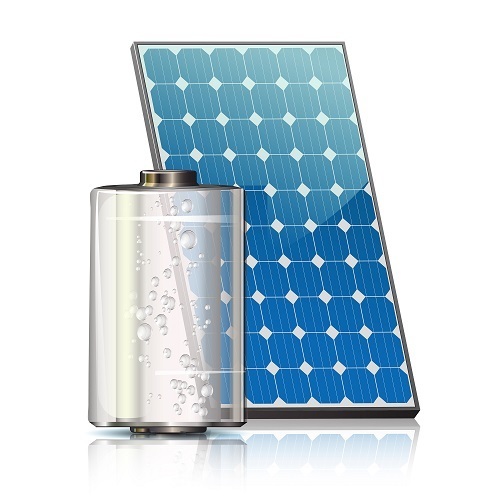
What Size Battery Do I Need?
The answer is: it all depends on what you are using your solar generator for.
If you are using your solar generator for larger home appliances, then a larger power rating (Ah) is recommended. For a home backup generator, you will need a battery with a rating of at least 100Ah, preferably more.
If you are using the solar generator for portable or outdoor use, where recharging electronics and powering small appliances make up most of your needs, then the power rating can be substantially lower. First of all, you won’t need as many amp hours, and secondly, you don’t want your generator weighing too much. 33Ah is a good target range for a portable solar generator battery.
To get a recommended power rating for your application, use one of the many online battery calculators available online, such as this one from Rimstar.org.
Which Type of Battery is Best?
If you need a battery for a home backup generator or any other fixed location power supply, then lead-acid batteries are perfectly suitable, including flooded batteries as long as they are ventilated. They are also cheaper.
You’ll find a greater choice of batteries that are lead acid, too.
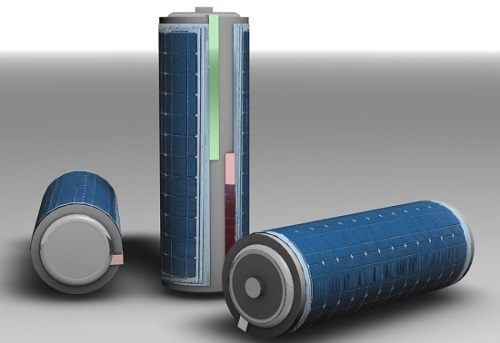
Lithium batteries are often the better choice for portable solar generators. Not only are they light, they are engineered for thousands of charging cycles, which is what portable generators are designed for in the first place. But they are expensive, which the sky-high prices for larger portable generators reflect.
About the Author David Roberts
I'm a Mechanical Engineer who's obsessed with solar energy and sustainable living.

